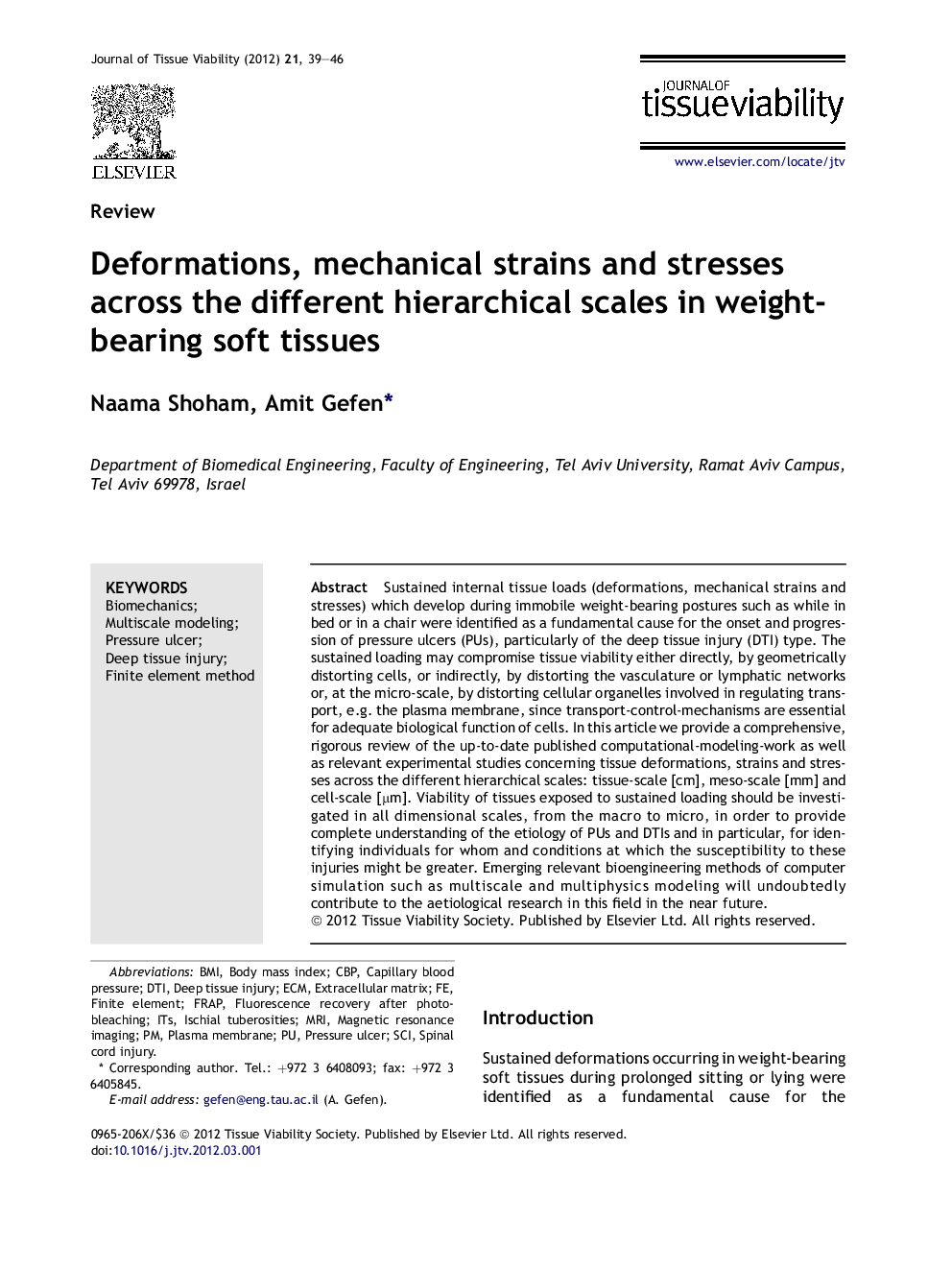| Article ID | Journal | Published Year | Pages | File Type |
|---|---|---|---|---|
| 2673958 | Journal of Tissue Viability | 2012 | 8 Pages |
Sustained internal tissue loads (deformations, mechanical strains and stresses) which develop during immobile weight-bearing postures such as while in bed or in a chair were identified as a fundamental cause for the onset and progression of pressure ulcers (PUs), particularly of the deep tissue injury (DTI) type. The sustained loading may compromise tissue viability either directly, by geometrically distorting cells, or indirectly, by distorting the vasculature or lymphatic networks or, at the micro-scale, by distorting cellular organelles involved in regulating transport, e.g. the plasma membrane, since transport-control-mechanisms are essential for adequate biological function of cells. In this article we provide a comprehensive, rigorous review of the up-to-date published computational-modeling-work as well as relevant experimental studies concerning tissue deformations, strains and stresses across the different hierarchical scales: tissue-scale [cm], meso-scale [mm] and cell-scale [μm]. Viability of tissues exposed to sustained loading should be investigated in all dimensional scales, from the macro to micro, in order to provide complete understanding of the etiology of PUs and DTIs and in particular, for identifying individuals for whom and conditions at which the susceptibility to these injuries might be greater. Emerging relevant bioengineering methods of computer simulation such as multiscale and multiphysics modeling will undoubtedly contribute to the aetiological research in this field in the near future.
